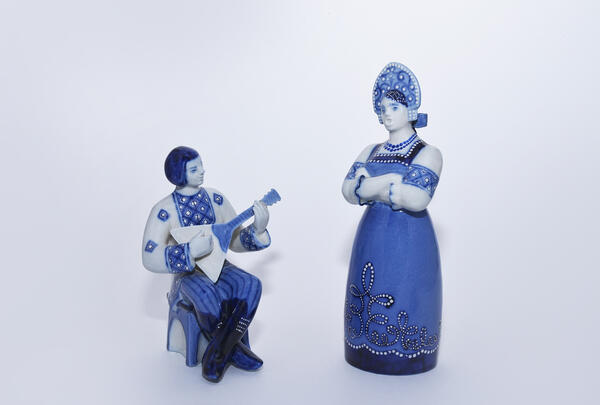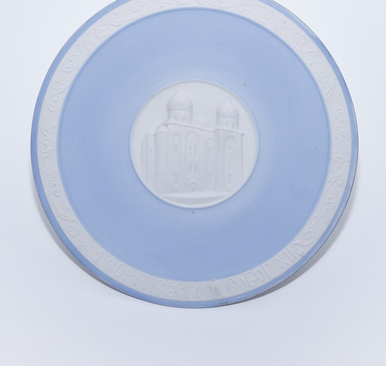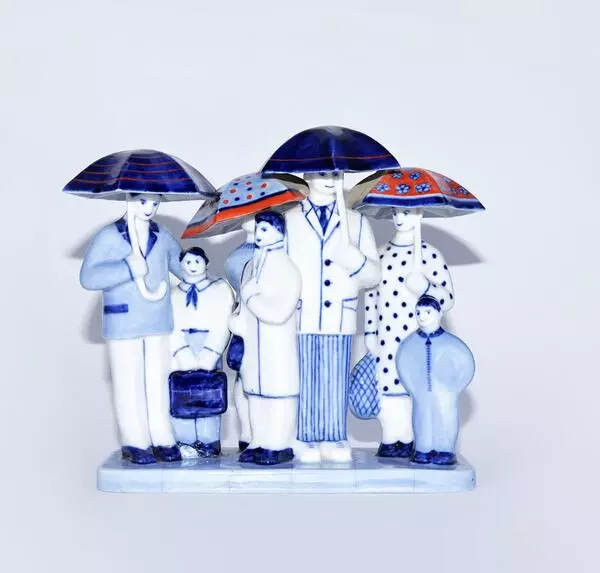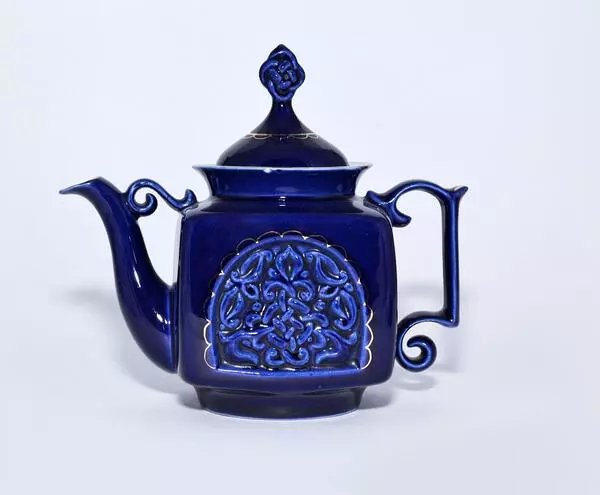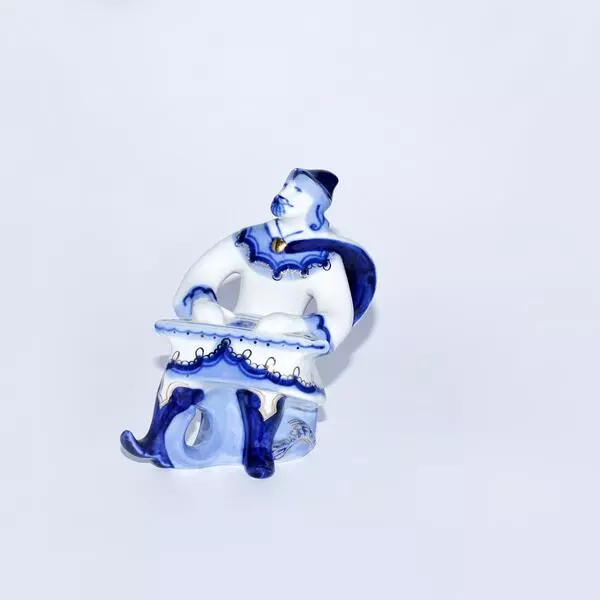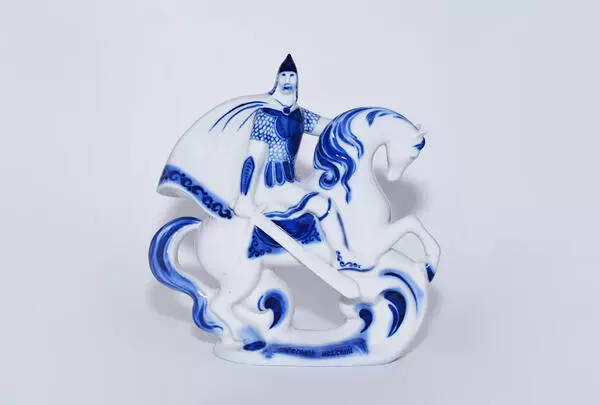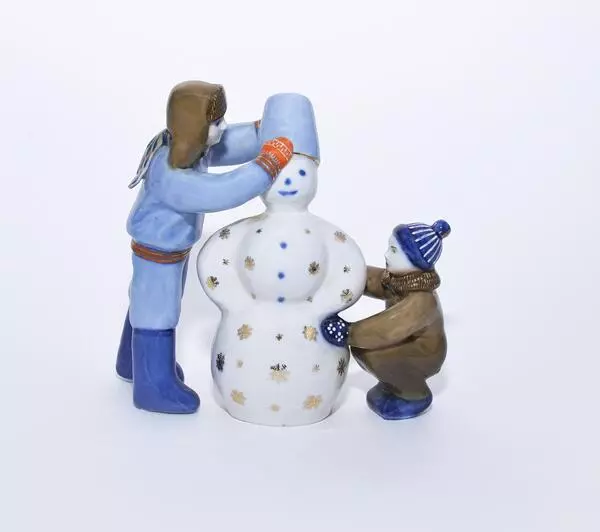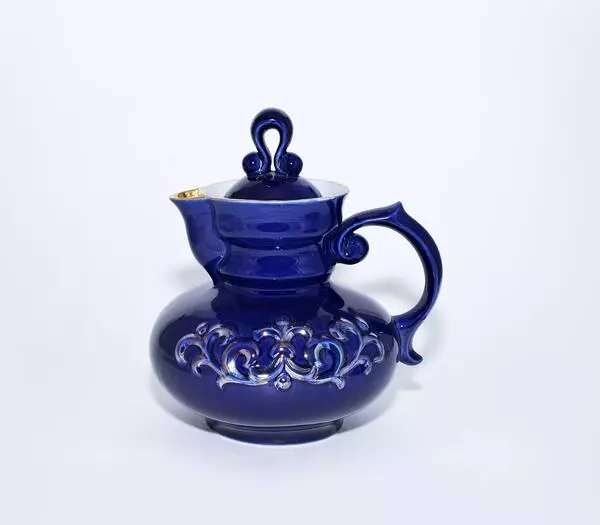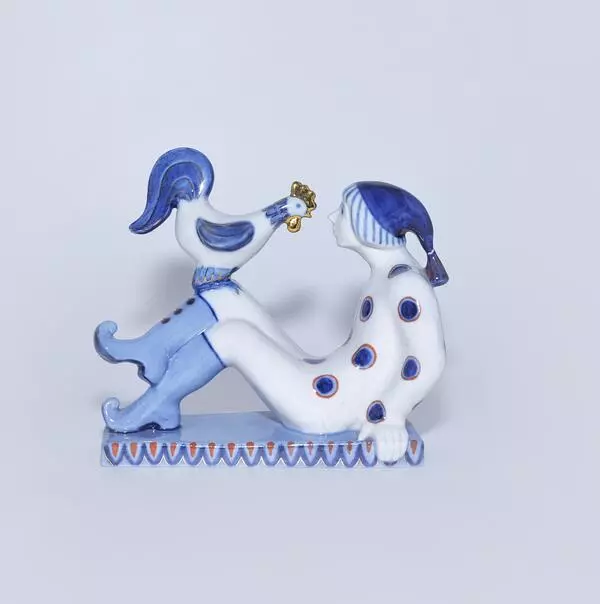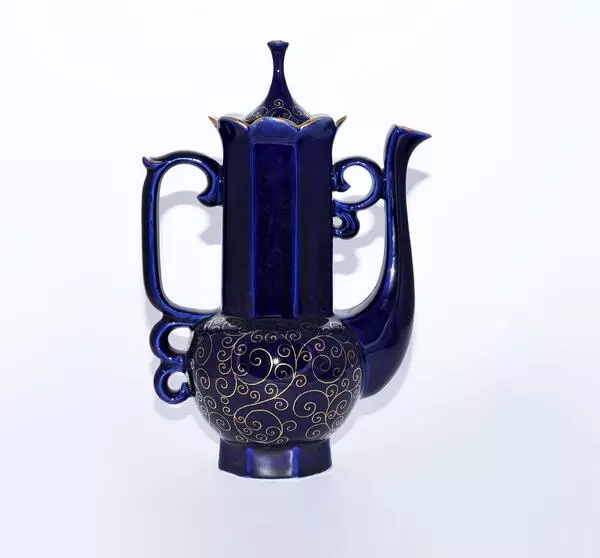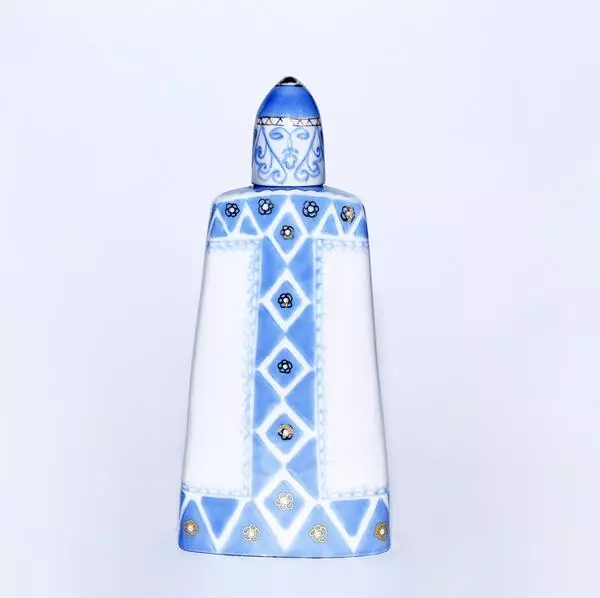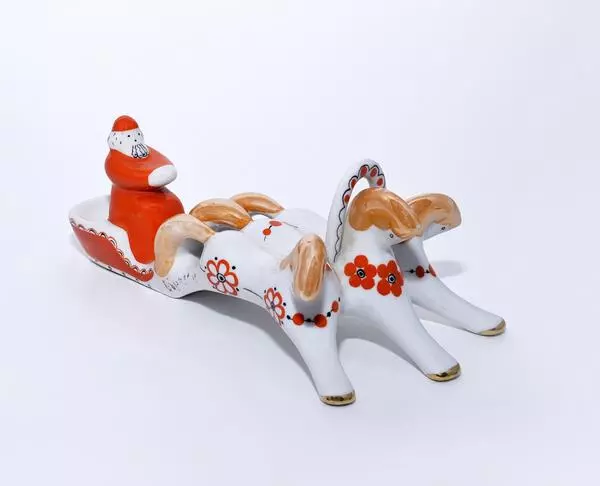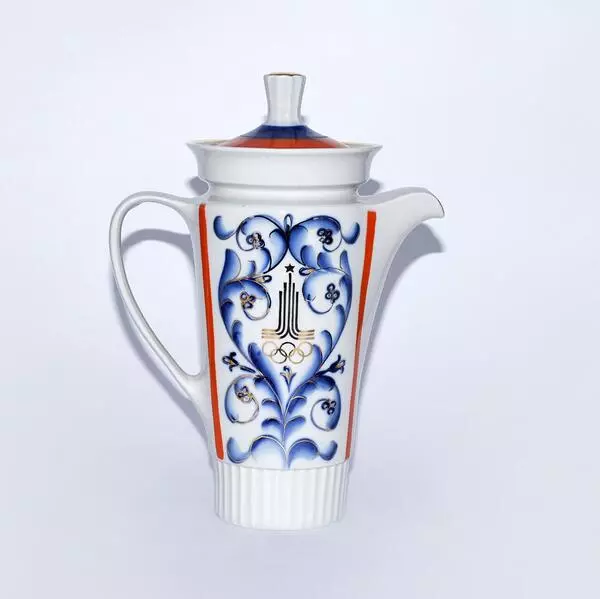Tamara Gavrilova, the chief artist of the Bronnitsky factory, made the sculptural composition “Russian Song” in 1992. The composition consists of two figures in Russian national costumes: a musician and a girl. The young man sits on a stool with a balalaika in his hands and plays a tune, while the girl stands with her arms folded across her chest and sings a song.
Tamara Gavrilova paid careful attention to the details of the sculptures: the girl is dressed in a sundress with an openwork pattern on the hem and an embroidered shirt, there are beads around her neck and her head is decorated with a kokoshnik (traditional Russian headdress). The musician wears a shirt with a diamond pattern, striped pants, and high boots. Gavrilova used different shades of blue to depict the clothes worn on feast days and special occasions.
In her works, Gavrilova often used traditional motifs: she created statuettes depicting the characters of Russian folktales and fairy tales and was inspired by old Novgorod architecture when she was designing the painting patterns for tableware. In this sculptural composition, the artist decided to develop the theme of folk music.
Instrumental folk music was not as popular in Old Rus’ as the vocal one. The most popular genres were work riddles, chants, ditties, round dances, as well as ritual, wedding, epic, dance, and lyrical songs. The most common musical instruments were the balalaika, “gusli” (multi-string plucked instrument), pipes and the horn. Later, in the 19th and 20th centuries, the bayan, accordion, mandolin, and guitar were added to this list under the influence of Western Europe.
Most of the old Russian musical genres had pagan roots, so from the 14th century the church began to ban folk songs — singing them was considered a sin. Nevertheless, folk music continued developing, and by the 16th-17th centuries, there was a tradition for the lyrical song in Moscovia. It was long and sung by several singers at once. Researchers believe that this song tradition gave rise to polyphonic choral singing — when several people with different voice ranges sang solo in the group.
Tamara Gavrilova paid careful attention to the details of the sculptures: the girl is dressed in a sundress with an openwork pattern on the hem and an embroidered shirt, there are beads around her neck and her head is decorated with a kokoshnik (traditional Russian headdress). The musician wears a shirt with a diamond pattern, striped pants, and high boots. Gavrilova used different shades of blue to depict the clothes worn on feast days and special occasions.
In her works, Gavrilova often used traditional motifs: she created statuettes depicting the characters of Russian folktales and fairy tales and was inspired by old Novgorod architecture when she was designing the painting patterns for tableware. In this sculptural composition, the artist decided to develop the theme of folk music.
Instrumental folk music was not as popular in Old Rus’ as the vocal one. The most popular genres were work riddles, chants, ditties, round dances, as well as ritual, wedding, epic, dance, and lyrical songs. The most common musical instruments were the balalaika, “gusli” (multi-string plucked instrument), pipes and the horn. Later, in the 19th and 20th centuries, the bayan, accordion, mandolin, and guitar were added to this list under the influence of Western Europe.
Most of the old Russian musical genres had pagan roots, so from the 14th century the church began to ban folk songs — singing them was considered a sin. Nevertheless, folk music continued developing, and by the 16th-17th centuries, there was a tradition for the lyrical song in Moscovia. It was long and sung by several singers at once. Researchers believe that this song tradition gave rise to polyphonic choral singing — when several people with different voice ranges sang solo in the group.

